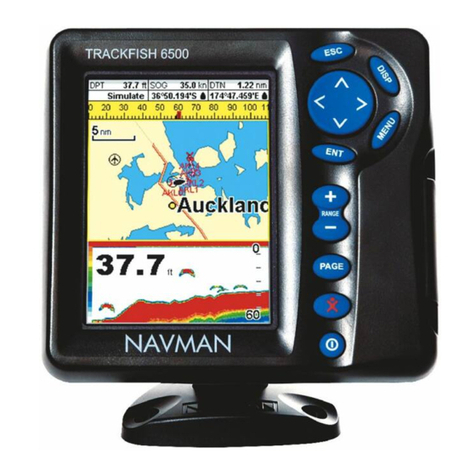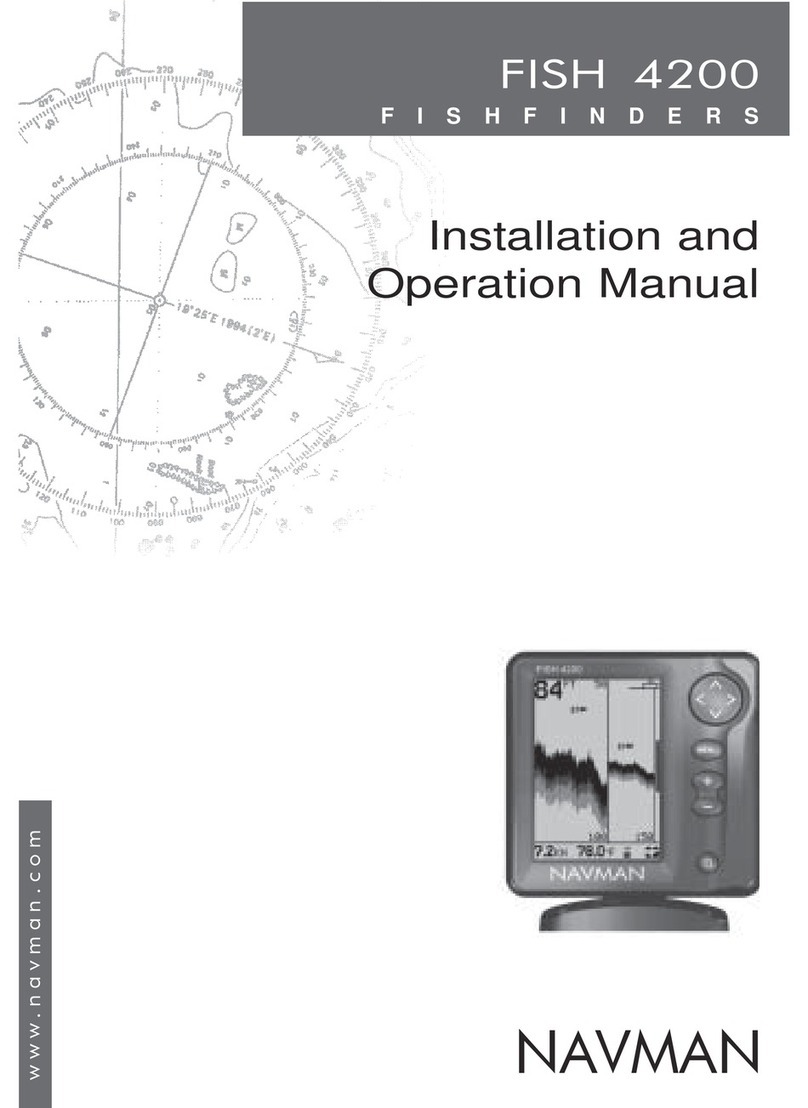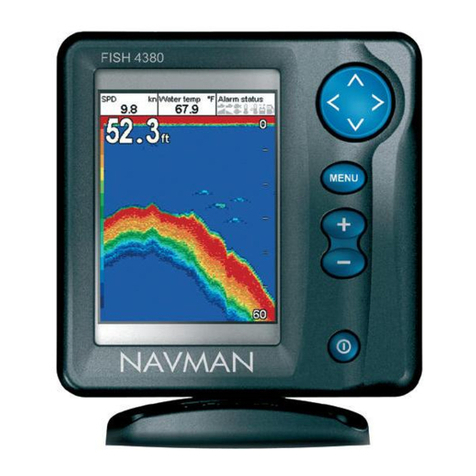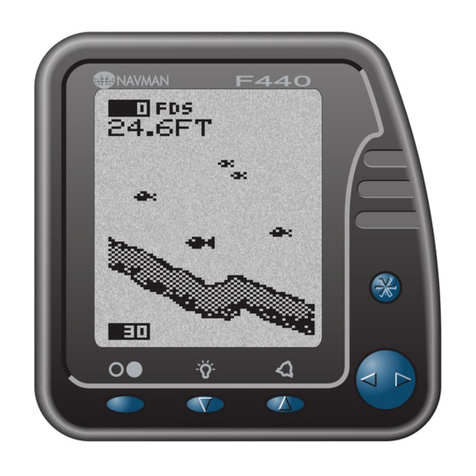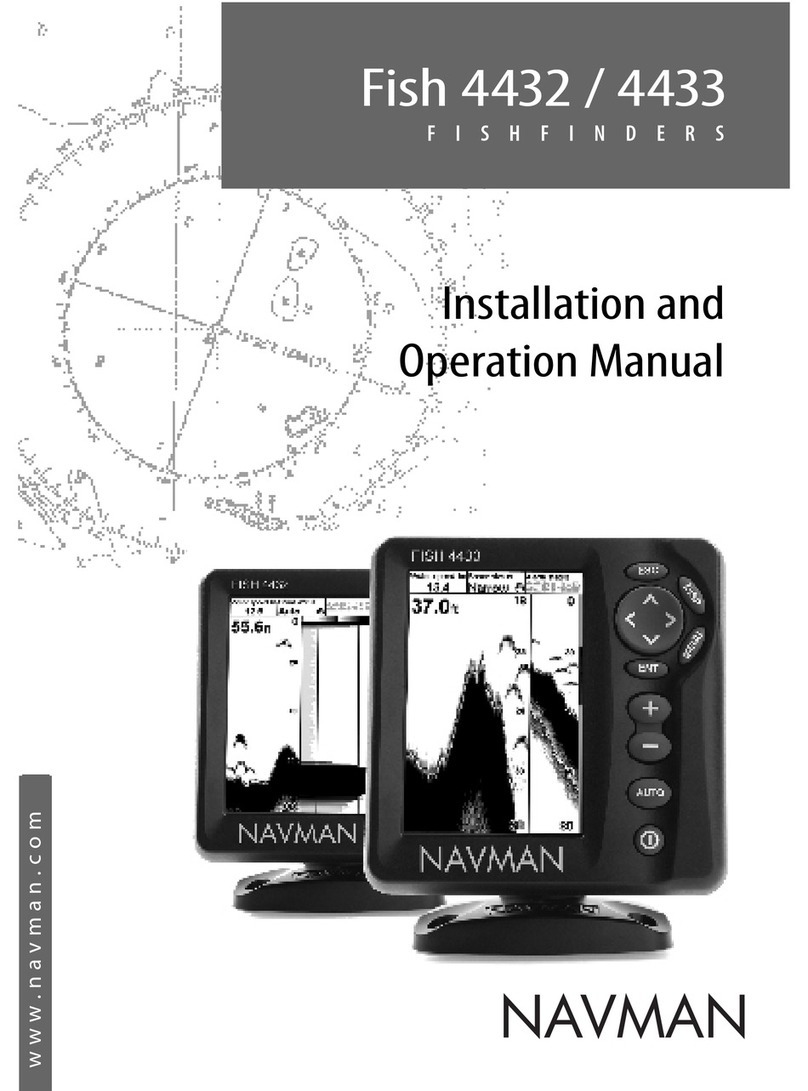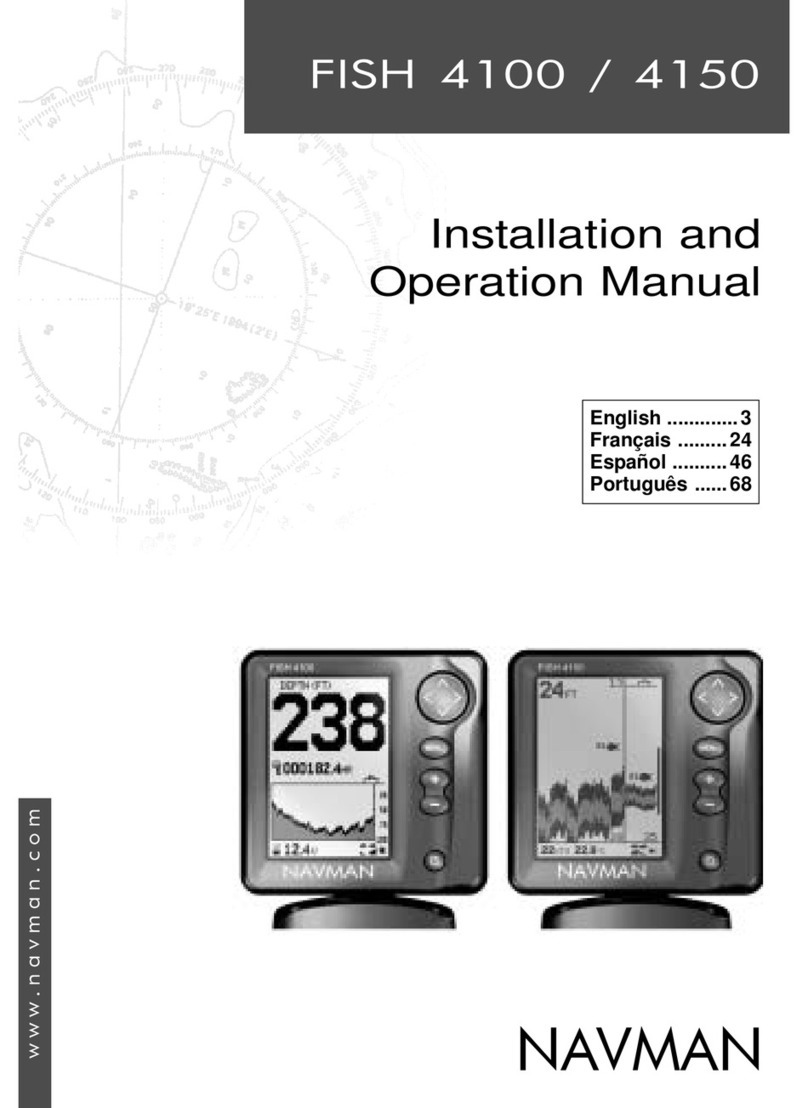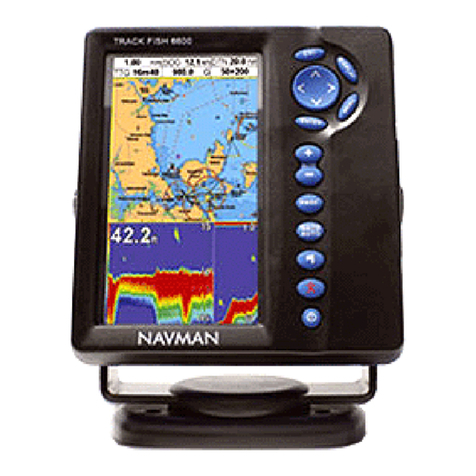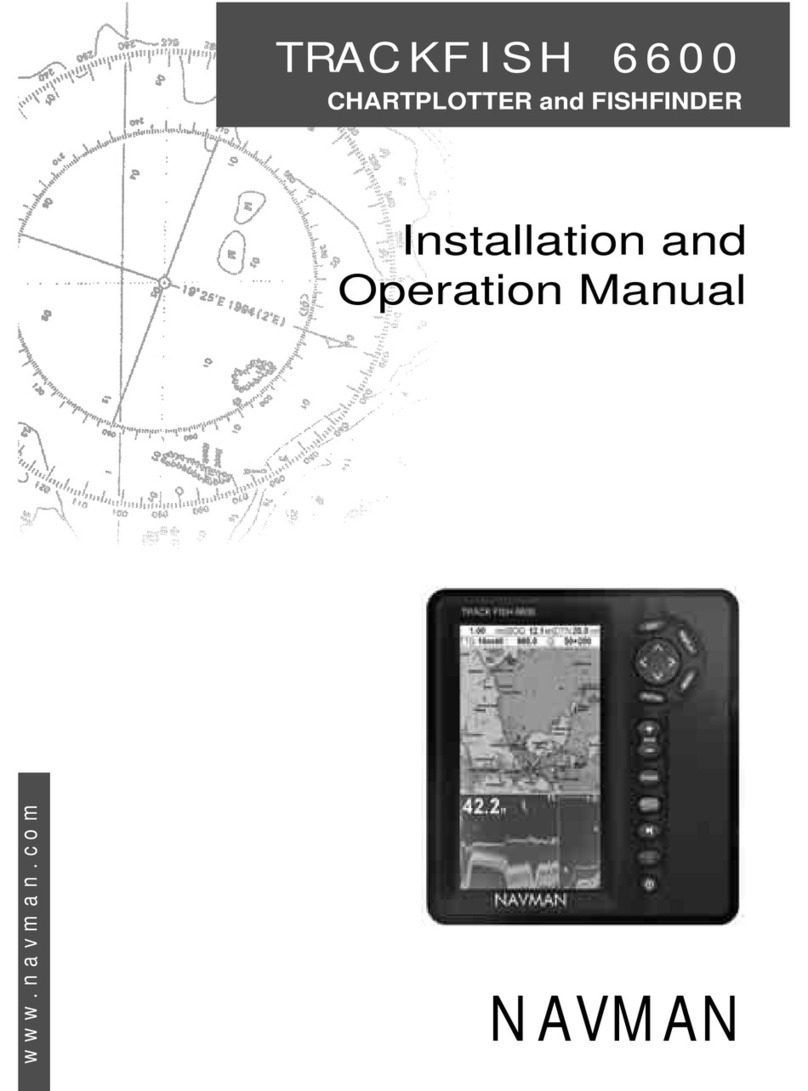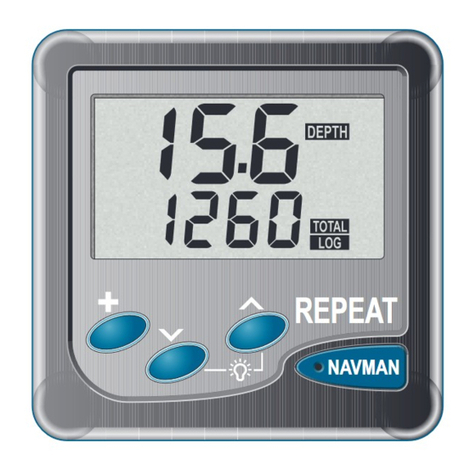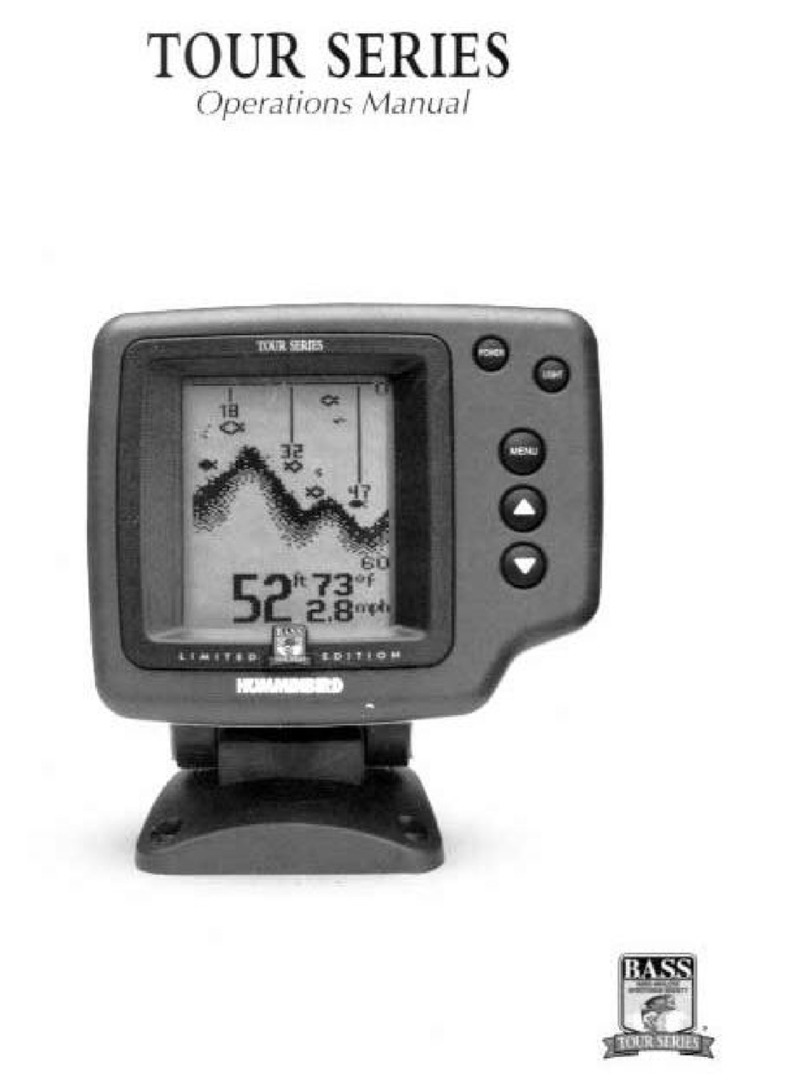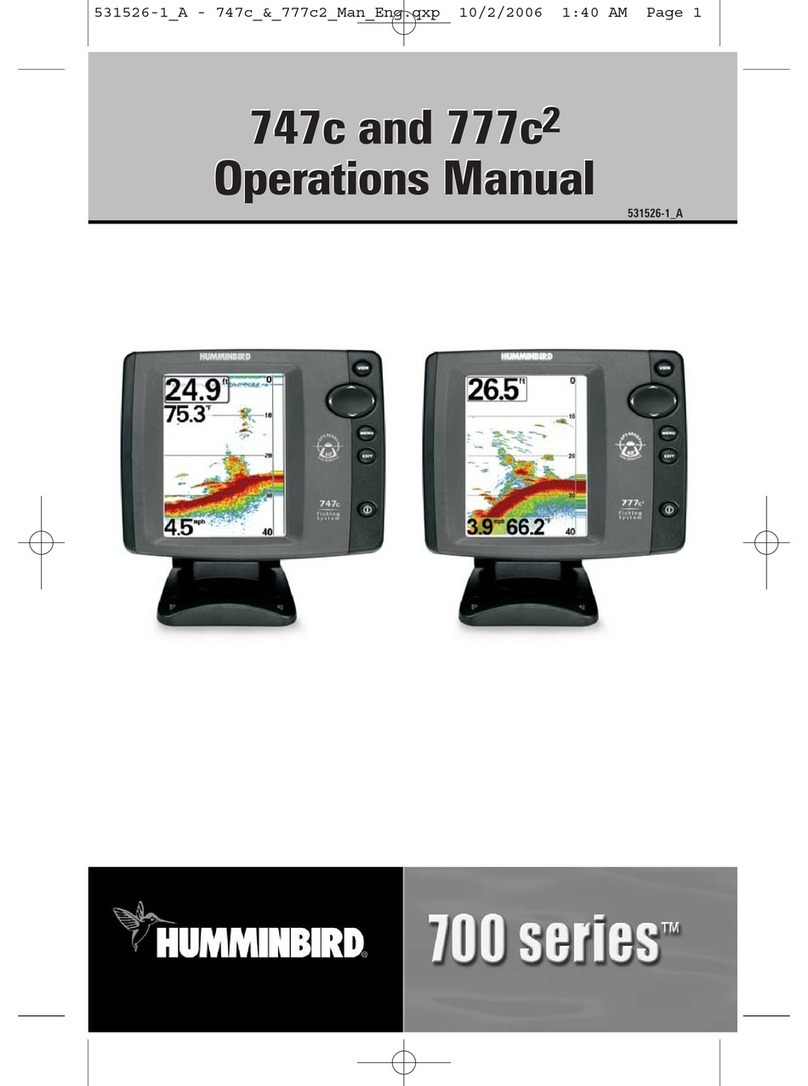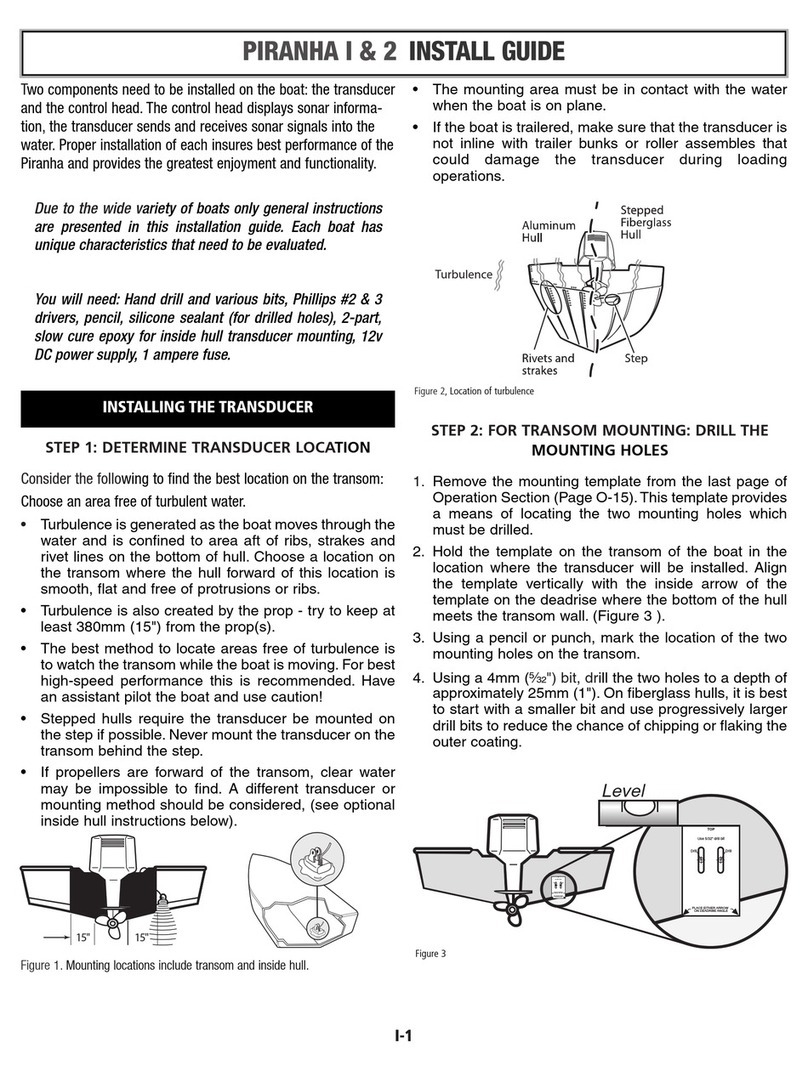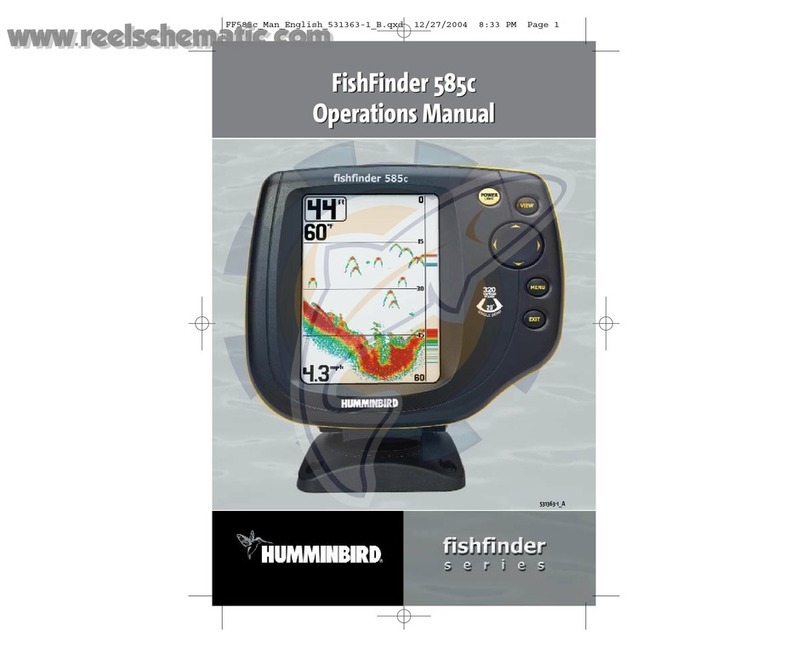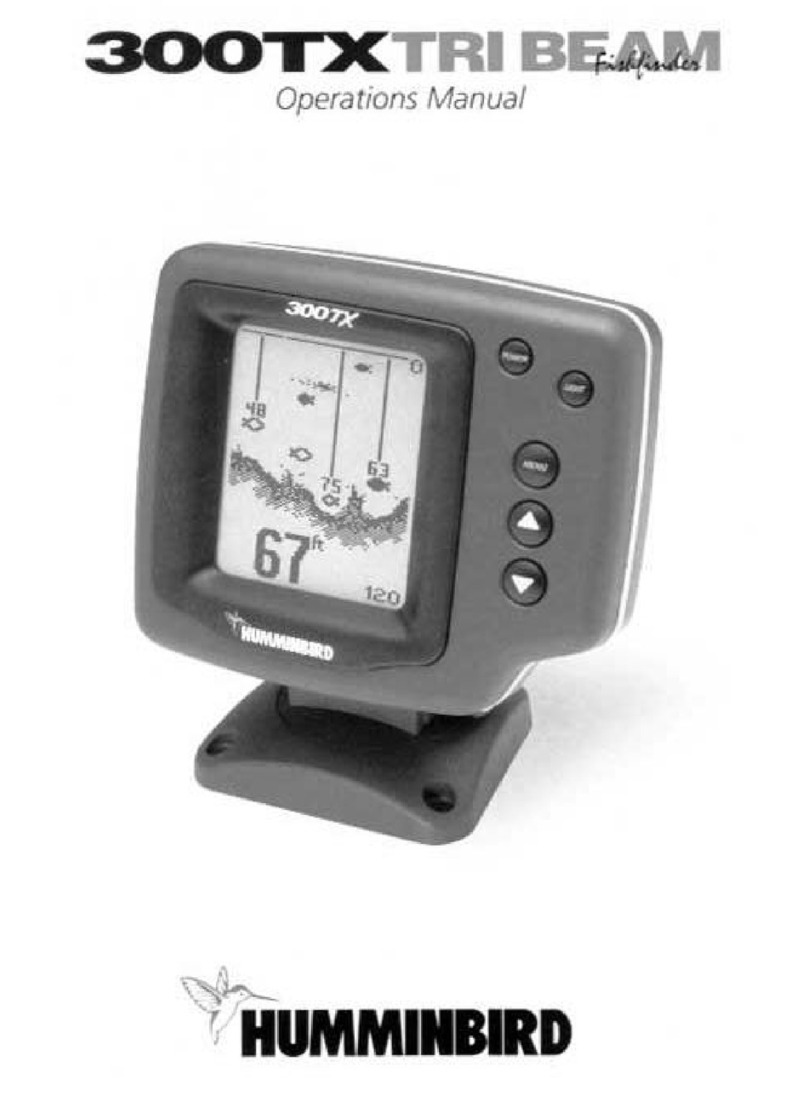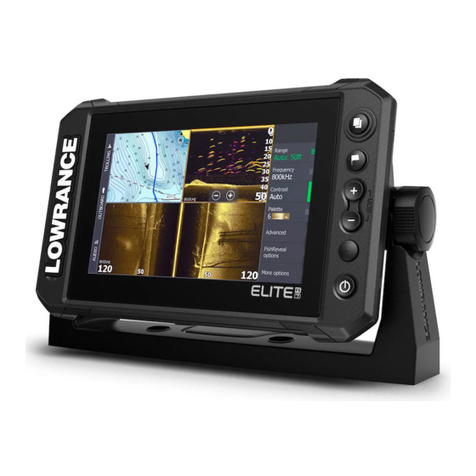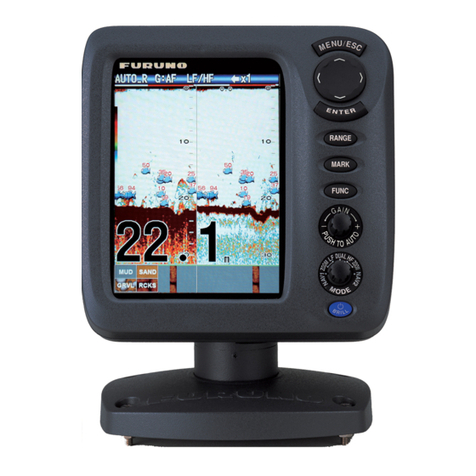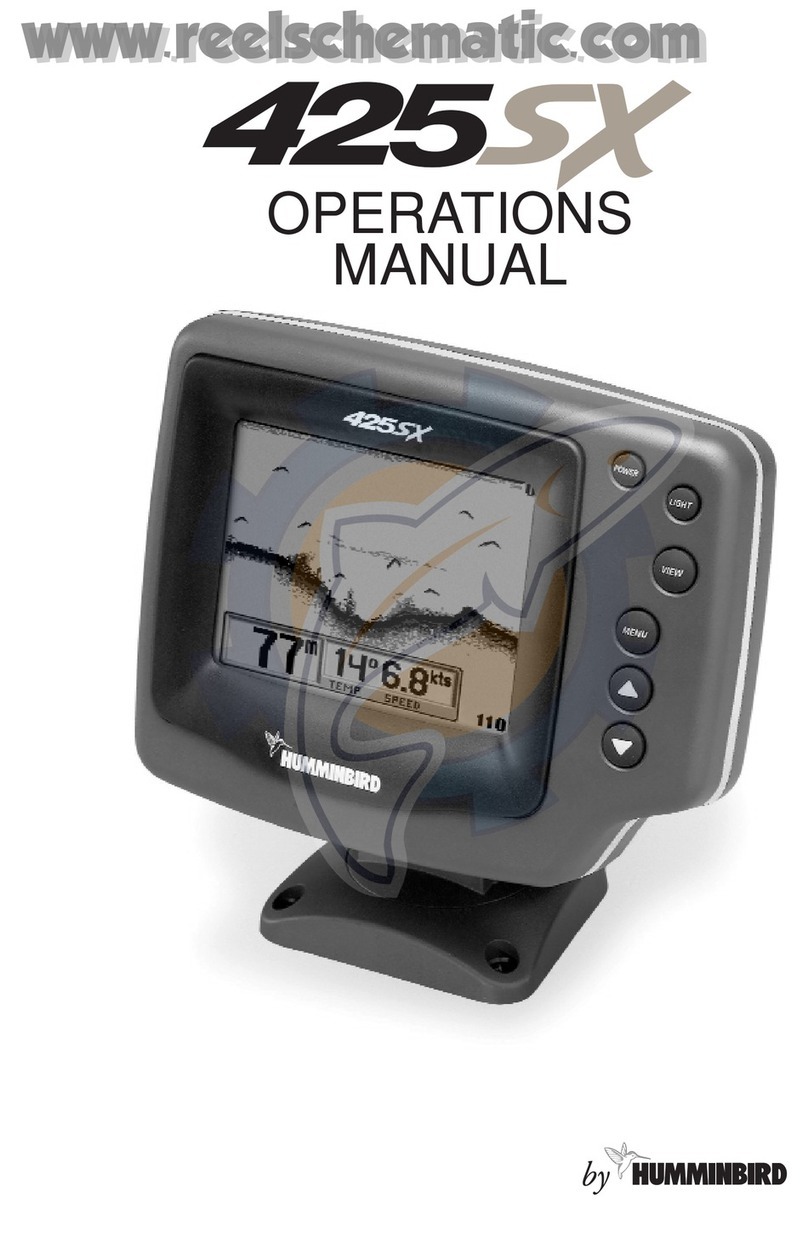10 NAVMANFishfinderUserManual
Operation
Introduction
The FISH400 and FISH440 use sonar
technology to display lake or seabed contours
and to detect fish. The system consists of an
LCD display unit and a depth transducer
positioned in the water. The model FISH440 is
also supplied with integrated boat speed and
water temperature sensors.
The LCD screen is menu driven for ease of use.
The automatic detection can locate and display
the position of fish with three different size fish
symbols. This feature can be disabled so that
the LCD will display only the raw electronic
signals. Experienced users can use this mode
to extract even more information about the water
and seabed conditions.
Note
Momentarily pressing the key
removes or displays depth, speed and
temperature data (depth only in the
FISH400) from the upper left corner of
the display. The format chosen is
retained in memory when the power
is switched off.
Turns the power ON and OFF
• Press for one second to turn the
power ON
• Press and hold for three
seconds to turn the power OFF
Selects digital information to be
displayed in the top left corner of the
Fish Finder screen.
Returns the unit to operating mode
from any menu.
Turns the backlighting ON or OFF
• Press once to turn the backlights
ON
• Press again to turn the
backlights OFF
Decreases setting values in menus.
Primary functions and quick operation
introduction
Menu selection system
Your fishfinder has many features that may be
selected for adjustment. Each of these features
have a menu screen. You may access all the
menu screens by repeatedly pressing the ∗
key.
Menus such as the manual gain control, shallow
anddeepwater alarmshaveadditional numerical
control windows. The number in this window is
changed by using the Vand ^keys. Any
changes made are recorded in memory as soon
as you exit the menu screen. All changes are
stored in memory when the power is
switched off.
Note
To exit or clear any menu from
the screen, press the key.
Turns the alarms ON or OFF
• Press once to turn the alarm ON
• Press again to turn the alarm
OFF
Increases setting values in menus.
Enters menu mode
Advances to the next menu
Movesthroughthelist of items in each
menu
∗
